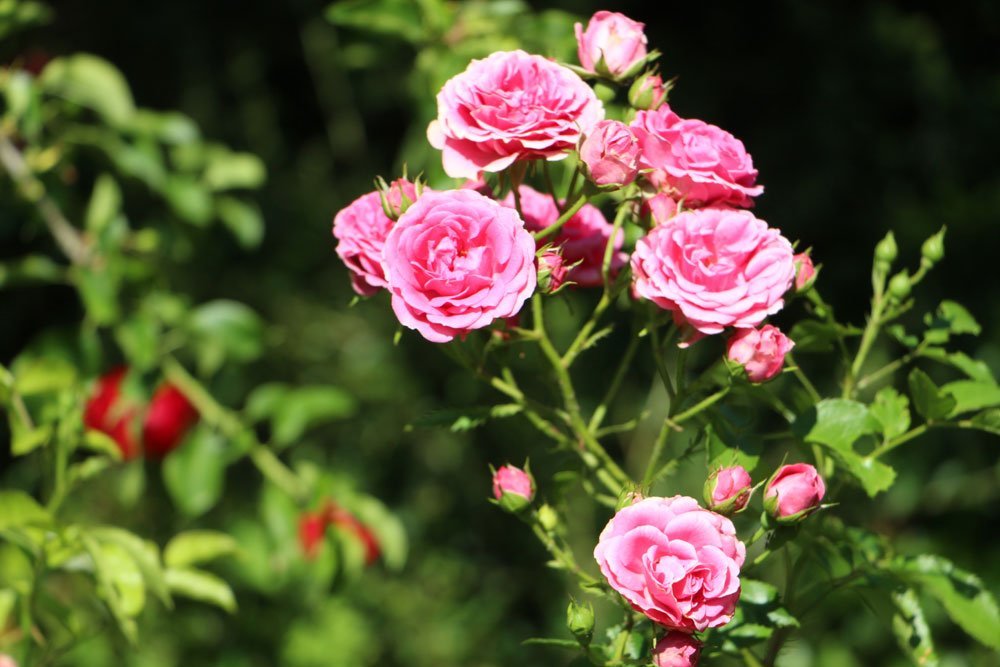Ash can be an alternative to conventional fertilizer in the garden. However, not every burned substance produces ash as fertilizer you can use.
In order for plants to get a growth boost and to be able to absorb enough nutrients from the soil, regular fertilization makes sense and is even necessary for some plants. Otherwise, a puny growth and a lack of flowering are the result. There are many different ways to provide plants with fertilizer. Why ash can also play a role, when it makes sense to fertilize with ashes and how ash can be used as fertilizer, we explain below.
Suitable for ash as fertilizer
Not every ashes are automatically suitable as fertilizer. The ash from briquettes and coal is not suitable as a fertilizer. The proportion of heavy metals and other toxic substances is usually significantly increased. Also unsuitable is wood ash, provided that it comes from impregnated, painted or surface-treated wood in another form. The residues of old textiles or colorfully printed magazines have also lost nothing in the bed. Only wood and charcoal ash as fertilizer is safe to use.
What happens when wood burns?
When wood is burned, the ash is enriched with the mineral components of the plant. However, the main constituents of ash are hydrogen and carbon, which are converted into water vapor and carbon dioxide during combustion. What the plant once absorbed in nutrients is found in comparatively low concentrations in the ashes.
Mineral components in wood ash
Wood ash has a high calcium content. The quicklime often accounts for almost half of the total amount of ingredients. Furthermore, about five percent contain potassium and magnesium. Wood ash is about three percent phosphorus pentoxide.
Furthermore, the following minerals are present in low concentrations:
- sodium
- boron
- iron
- manganese
Depending on the origin of the wood, it is often possible to detect heavy metals such as lead, chromium or cadmium.
Ash as fertilizer – restrictions
As a garden fertilizer ash is an option, but not the first choice. Depending on the concentration of the ingredients, wood ash may have a high pH. Scald lime causes quite aggressive soil fertilization. This can lead to leaf burns in the plants and the soil life is affected. In agriculture, only ash or clay soils without vegetation are treated with ash.
How high the proportion of the individual components in the ashes really is, the hobby gardener can hardly determine for themselves. Thus, the fertilizer can not be adapted to the respective soil conditions.
Wood ash as fertilizer – requirements
- Only ash from untreated wood may be used.
- The ash must not be extracted from painted wood.
- As a lighter only colorless newsprint paper should be used.
- Wood ash must not be mixed with coal ash.
Do the ash test!
If it is a question of large quantities of firewood whose ashes are to be used as fertilizer , it is advisable to send an ash sample to a chemical testing laboratory and have it tested to see how much heavy metal is contained. To make a meaningful analysis, about ten grams of ash is sufficient. Tested on the ten to twelve most abundant heavy metals. The prices for the test vary between the individual laboratories and about $150.
If the test confirms that you have a low level of heavy metals, the ashes can also be used in the kitchen garden.
For fertilization with wood ash, the following plants are grateful:
- potatoes
- onions
- tomatoes
- leek
- raspberries
Hints for fertilizing with ash
If you want to fertilize with wood ash, some things should be considered:
- Use only the residues of untreated wood. The burning of painted or varnished wood causes toxins that should not get into the soil.
- It is an advantage to know the origin of the firewood. If it concerns wood from industrial regions or around a plant, which stood on a busy road, one can assume a high heavy metal concentration.
- The ash should not be used as fertilizer immediately after burning. If the ashes have not yet completely cooled, they can ignite themselves outdoors.
- »Tip: Collect the ashes in a sealed metal container and allow to cool for a few days.
- Under no circumstances should the ashes be kept outdoors. After a downpour, the ashes no longer contain potassium and thus lose a valuable substance for the plants.
- The ashes should be spread on the beds on a calm day. As a protection against the fine ashes, it is advisable to work with gloves, goggles and dust mask.
- The late winter is the ideal time for ash fertilization. Work with small quantities, which are first distributed around the plant on the ground and then worked in with a rake.
Use natural firelighters to produce ash as fertilizer
You should not use the commercially available commercial firelighters. Even in newsprint or egg cartons, mineral oil residues may be present due to the recycling process.
Natural igniters are:
- small branches
- narrow logs
- sawdust
- dry leaves
- nutshells
Ash as fertilizer is not suitable for all plants

The ash fertilization is particularly suitable for acidification of the soil. The alkaline ash causes the neutralization of the substrate. Plants that prefer an acidic environment should not be fertilized with ash.
This includes:
- rhododendron
- orchids
- peonies
- daffodils
- camellias
Even in wood ash, toxic substances can not be completely excluded. Therefore, only ornamental plants should be provided with it (unless a precise analysis of the ingredients is available). If vegetables are fertilized with heavy metals loaded ash, the substances get into the food chain.
»Tip: fertilization with wood ash should generally be economical. Per square meter and garden season, 100 milliliters of ash are sufficient.
Ornamental plants that tolerate ash fertilization:
- fuchsias
- roses
- cloves
- phlox
- lavender
- gladioli
- chrysanthemums
- geraniums
How often and how much should be used?
With ash as fertilizer, less is always more. Fertilize in any case sparingly. More than 30 grams per square meter should not be incorporated into the soil. In small quantities, the ashes can also be added to the compost. Simply apply a thin layer of ash and cover with a thick layer of compost. Instead of scattering the ash directly into the bed, it can also be added to the irrigation water. This is especially useful on windy and dry days.
»Tip: During the winter, the ashes can be stored in a suitable metal container.
Avoid over-fertilization by mixing the ash with sand or stone meal.
Other uses in the garden
The use just described as fertilizer is not the only application of ash in the home garden. Ash can also fight pests – such as aphids, ground fleas or cabbage snakes. Furthermore, ash is a good weed killerand counteracts the spread of algae and mosses.
When cutting trees, ash is also a good wound closure agent. At the same time fertility can be increased with a supply of wood ash.
A tree paint is made as follows:
- 250 grams of wood ash
- 2.5 kilograms of clay
- 1.5 kilograms cow dung
- 250 grams of stone or algae flour
- five liters of warm water
- a quarter of a liter of undiluted arable haulm broth
All ingredients are well mixed together and applied to the stem. For this a frost-free winter day has to be chosen.
Do you have any more wood ash left? Then use ashes in the winter instead of road salt to keep the sidewalks snow- and ice-free. This gets the surrounding plants much better and also the passers-by are guaranteed not to waver.
 Gerhardt Richter is a writer and a trainer at trade technical colleges, specializing in carpentry, plumbing, mechanics and construction.
Gerhardt Richter is a writer and a trainer at trade technical colleges, specializing in carpentry, plumbing, mechanics and construction.




